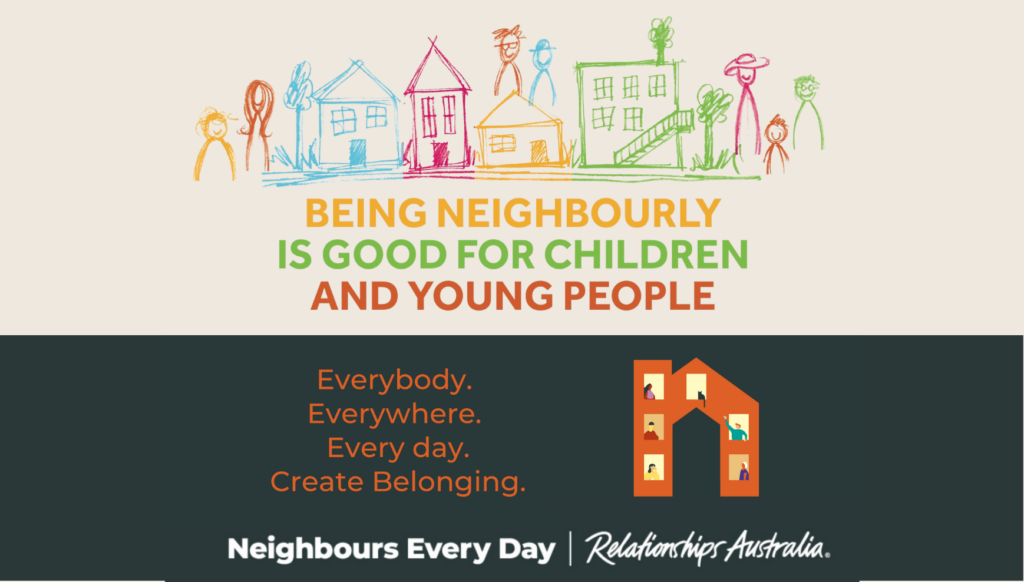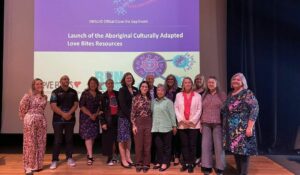How does being a friendly neighbour help children?
Creating kind, friendly environments for children is more than just a nice idea; research shows that it can help to boost children’s health and wellbeing.
The negative side – Adverse Childhood Experiences
When we talk about child wellbeing we often talk about Adverse Childhood Experiences. These are commonly referred to as ACEs and include things like violence, health issues, death, abuse, extreme stress, and crime.
Without the right support, ACEs can have long term negative effects on a child’s life. Obviously, we want to prevent ACEs as much as possible (and this is a big part of NAPCAN’s work). But when ACEs can’t be – or haven’t been – prevented, we need to know how to minimise the harm.
The positive side – Positive Childhood Experiences
Research is showing that Positive Childhood Experiences – like having good neighbours, friends or caring adults around you – can help to buffer the harmful health effects caused by ACEs.
For instance, a study from the Brigham Young University found that even when an individual had four or more ACEs (which is not what we want for any child!), having a high number of Positive Childhood Experiences can help buffer the child from the negative effects.
Interestingly the study also found that – regardless of ACEs – the absence of Positive Childhood Experiences and relationships can also be detrimental to lifelong health.
Which is even more reason to focus on boosting the positive.
Shifting the balance:
The list of Positive Childhood Experiences in the study includes having:
- friends
- a school that you like, with teachers who care
- opportunities to have fun
- adults that listen and care
- friendly neighbourhoods.
So, while an individual might not be able to change all these things for a child, it’s encouraging to think that every single one of us has the power to contribute to Positive Childhood Experiences.
A great way to be part of creating friendly neighbourhoods is to get involved with Neighbour Day (the last Sunday of March) which is the annual day of action for the Neighbours Every Day campaign.
It’s good for you, it’s good for your community, it’s good for children, and it’s good for our future.
Link to resources:
Video – Children thrive in friendly neighbourhoods
Fact sheet – Being neighbourly is good for children and young people
P.S. The role of governments
While it’s empowering to know that we can all help to create Positive Childhood Experiences, there are many changes that are beyond the control of individuals. These are things that benefit us all like funding community and health services and reducing poverty, unemployment, crime and unstable housing.
We can all call on governments to put the needs of children first, including by supporting:
- Community hubs such as Neighbourhood Centres and providing free community activities to bring people together
- Playgroups (including targeted groups for parents at risk of social isolation e.g. single parents and fathers, parents of children with a disability)
- Sport and recreation clubs (making sure that there are diverse activities and affordable/free options for every child to join if they want to – not every family is into team sport or can afford $100s in registration fees)
- Affordable quality early childhood education where families can connect with each other and children can develop early skills
- Stable social housing where families can feel secure and are not forced to move suburbs unless they want to
- Adequate welfare payments and flexible working conditions to help lift families out of poverty and ensure every child has the resources to participate in all aspects of life (1 in 6 children in Australia are currently living in poverty)
- Family-friendly urban design e.g. green spaces and parks to bring people together, public transport and bike paths to connect people, schools and services within walking distance of each other
- Inclusion of loneliness resources in the school curriculum so children can learn about the consequences of loneliness, how to cope when it occurs, and the skills to reconnect with others
- Workforce development to train practitioners to notice individuals who are at risk of loneliness and support them to become connected
- The rights of children and young people to have a say about their neighbourhoods and what they want. Past research showed that most children said they did not feel listened to within their community.




